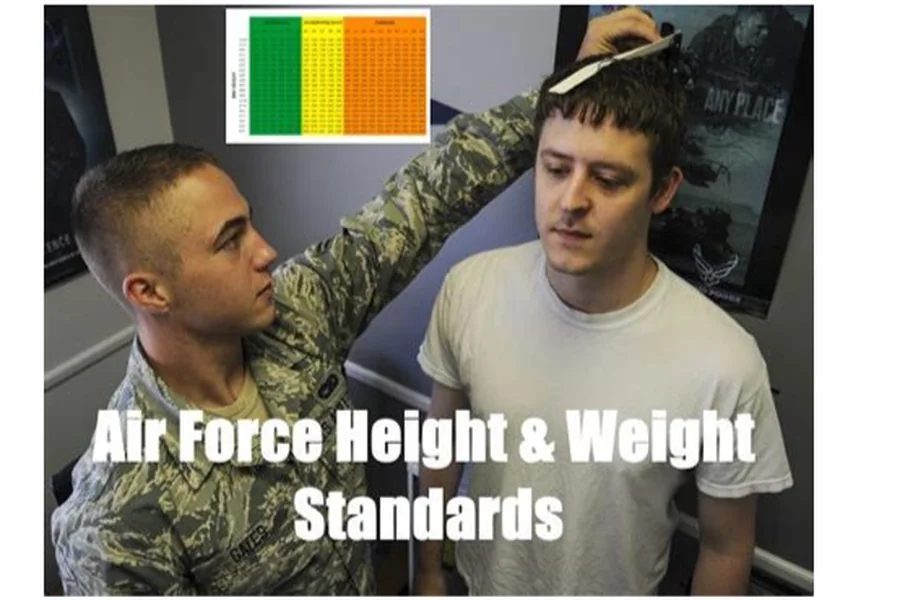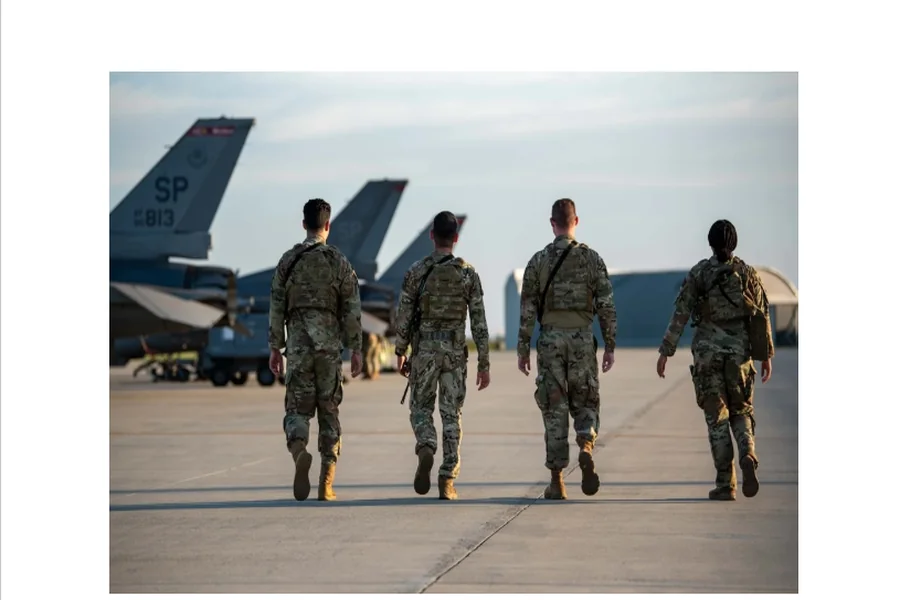When you think about joining the U.S. Air Force, your mind might jump to fighter jets, high-tech missions, or elite pilots soaring through the skies. But before any of that, there’s a basic step every recruit must meet — passing the Air Force height and weight chart.
This chart isn’t just about numbers. It’s a symbol of readiness, discipline, and physical preparedness — all essential traits for serving in one of the most respected branches of the U.S. military.
This article will explore the Air Force height and weight chart, why it matters, and how recruits can meet these standards. We’ll also break down body fat percentages and BMI guidelines and offer tips for success.
Understanding the Air Force Height and Weight Chart
The Air Force height and weight chart is a standardized tool used during enlistment to ensure that candidates meet minimum physical requirements. It sets acceptable weight ranges based on height and gender.
These standards are not arbitrary — they reflect years of research into optimal health, mobility, and performance under stress.
Here’s an example of the standard Air Force height and weight chart for males and females:
Male Air Force Height and Weight Chart (inches & pounds)
| HEIGHT (INCHES) | MINIMUM WEIGHT (LBS) | MAXIMUM WEIGHT (LBS) |
| 60 (5’0″) | 107 | 140 |
| 62 (5’2″) | 113 | 148 |
| 64 (5’4″) | 119 | 155 |
| 66 (5’6″) | 125 | 163 |
| 68 (5’8″) | 131 | 170 |
| 70 (5’10”) | 137 | 178 |
| 72 (6’0″) | 143 | 185 |
| 74 (6’2″) | 149 | 193 |
Female Air Force Height and Weight Chart (inches & pounds)
| HEIGHT (INCHES) | MINIMUM WEIGHT (LBS) | MAXIMUM WEIGHT (LBS) |
| 60 (5’0″) | 101 | 133 |
| 62 (5’2″) | 107 | 140 |
| 64 (5’4″) | 113 | 147 |
| 66 (5’6″) | 119 | 154 |
| 68 (5’8″) | 125 | 162 |
| 70 (5’10”) | 131 | 169 |
| 72 (6’0″) | 137 | 177 |
Note: These are general guidelines. Final eligibility is determined by body fat percentage as well.

Beyond the Numbers: Body Fat Percentage Standards
While the Air Force height and weight chart provides a baseline, the real test is body fat measurements.
The Air Force uses the tape method to measure body fat using neck and waist circumference. Here’s the current standard:
| AGE GROUP | MALE BODY FAT % | FEMALE BODY FAT % |
| 17–20 | ≤ 20% | ≤ 28% |
| 21–27 | ≤ 20% | ≤ 28% |
| 28–39 | ≤ 22% | ≤ 30% |
| 40+ | ≤ 24% | ≤ 32% |
Even if someone falls within the height/weight range, failing the body fat test means they won’t pass the medical screening at MEPS (Military Entrance Processing Station).
How to Prepare for the Air Force Physical Standards
Meeting the Air Force height, weight chart, and body fat requirements requires more than luck—it takes commitment.
Here are some tips to help you get ready:
- Start early: Give yourself at least 3–6 months to reach your goals.
- Track progress: Use apps like MyFitnessPal to monitor calories and workouts.
- Focus on nutrition: Eat lean proteins, vegetables, and whole grains, and limit processed foods.
- Cardio and strength training: Aim for 30–60 minutes of daily exercise.
- Stay hydrated: Water helps regulate metabolism and energy levels.
- Get enough sleep: Recovery is key to building endurance and muscle.
Emotional Side of Meeting Air Force Standards
For many young men and women, joining the Air Force is a lifelong dream. Failing the height and weight chart or body fat test can feel devastating.
But here’s the truth: it’s never too late to change.
Stories from former recruits who struggled with their Weight and succeeded later prove that determination and discipline can turn setbacks into comebacks.
One former airman shared:
“I failed my first attempt because I was overweight. I cried that day. But six months later, I passed — and I ended up deploying overseas. That moment taught me more about myself than any flight ever could.”
That’s the heart behind the Air Force height and weight chart — not just meeting a standard but becoming the best version of yourself.
Can You Waiver Into the Air Force?
Sometimes, even if you don’t meet the Air Force height and weight chart, you may still be eligible for a waiver.
Waivers are possible in certain cases, especially for individuals with high muscle mass or other medical conditions that affect Weight. However, approval is rare and requires additional testing and documentation.
Consult with a recruiter early to understand your options if you’re close to the limits.
Frequently Asked Questions (FAQ)
Q1: What is the Air Force height and weight chart?
A: It’s a table that determines whether a recruit meets the physical size and weight standards for enlistment in the U.S. Air Force.
Q2: Is the Air Force height and weight chart different for males and females?
A: The chart has separate guidelines based on average body composition differences for males and females.
Q3: What is the body fat requirement for the Air Force?
A: Males must have less than 20–24% body fat, depending on age. Females must have less than 28–32%.
Q4: What happens if I don’t meet the Air Force height and weight chart?
A: You may be given time to improve or denied entry until you meet the standards.
Q5: Can I join the Air Force if I’m underweight?
A: Yes, as long as you meet the minimum Weight for your height and pass the body fat test.
Q6: Where can I find the official Air Force height and weight chart?
A: You can access the full chart through the Air Force Recruiting Service or your local recruiter.
Conclusion: More Than Just Numbers
The Air Force height and weight chart is more than a list of numbers — it’s a gateway to service, honor, and pride. Whether preparing to enlist or just curious about the standards, understanding this chart is the first step toward achieving your goal.
And remember: fitness is a journey. Every drop of sweat brings you closer to the uniform, the mission, and the legacy of the U.S. Air Force.
Official Resources and Social Media Links
Follow the U.S. Air Force on social media for updates, stories, and guidance:
| PLATFORM | ACCOUNT LINK |
| U.S. Air Force | |
| Twitter/X | U.S. Air Force |
| U.S. Air Force | |
| YouTube | Air Force Official Channel |



